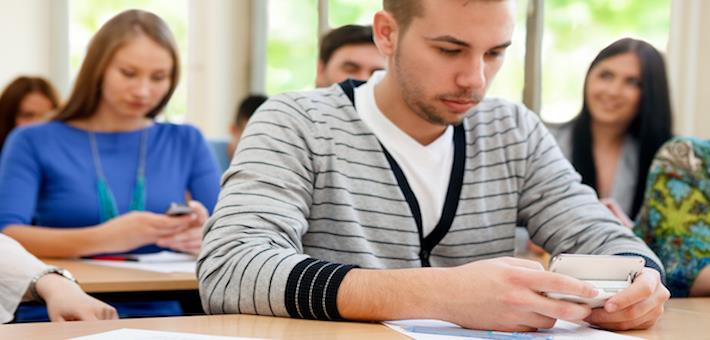
Does Texting in Class Distract Students? It Depends on the Content!
A study in Communication Education investigates whether sending or receiving text messages in class distracts students from the lecture. The study shows that this depends on the content of the messages. Messages related to the lecture do not harm students' learning. But messages unrelated to the lecture do negatively impact learning in class.
Take aways
- Texting and tweeting messages that relate to the lecture content does not appear to harm learning in class.
- However, sending and receiving messages unrelated to the lecture content seems to negatively impact students’ learning and note-taking in class.
- To tackle potential problems with students texting distracting messages during class, teachers could integrate the use of mobile phones into the lecture.
Study information
The question?
How does using mobile phones during lectures impact students’ learning and note-taking?
Who?
145 college students between the ages of 18 and 23 years (mean age: 18; 65% were female)
Where?
United States
How?
Students signed up to attend a video lecture. Then, they were randomly assigned to one of the following five groups: (1) receiving irrelevant messages, where they received text messages that were unrelated to the lecture content (e.g., “What is your favorite restaurant for dinner?”), (2) receiving relevant messages, where they received text messages related to the lecture they were watching (e.g., “What is the name of the theory the professor is talking about now?”), (3) sending irrelevant messages, where students were instructed to send tweets unrelated to the lecture content, (4) sending relevant messages, where they were instructed to send tweets related to the video lecture, or (5) control group, were students were instructed to put away their mobile phones for the duration of that video lecture. In the receiving and sending messages groups, students received or were instructed to send messages with time lapses of 30 or 60 seconds.
After each group had watched the video lecture, students had 3 minutes to take there notes and prepare to take a test. The students took a free-recall test, having to recall as much information as they could remember from the lecture and to write that information on the test. They also took a multiple-choice test which consisted of 16 questions related to the lecture content.
Facts and findings
- Students who received or created messages related to the video lecture scored better on the multiple choice test and free-recall test compared to the students who responded or created messages that were unrelated to the lecture content.
- Interestingly, students ended up taking lower quality notes when they created messages related to the lecture.
- When students received text messages related to the lecture content they obtained a similar score on note-taking, recalling information, and the multiple-choice test compared to students who abstained from using their mobile phone during the entire lecture.
- Students who received or created messages unrelated to the lecture content scored lower on all three tests compared to the students who did not use their phones during the lecture.